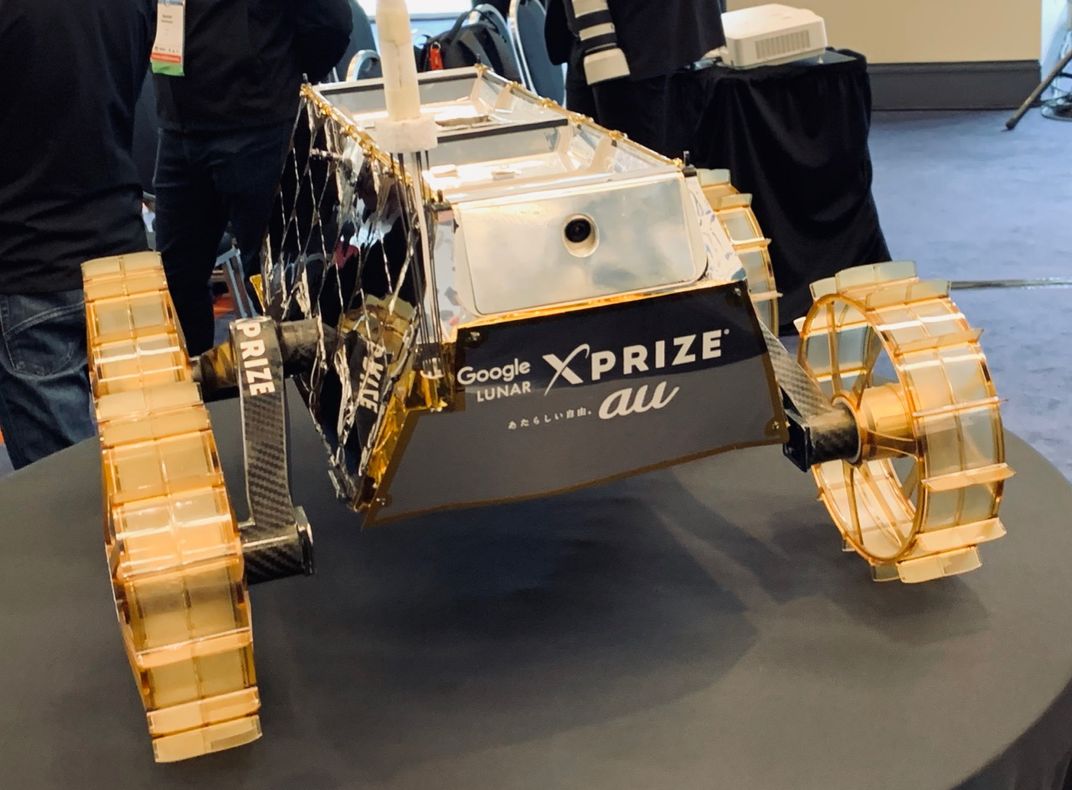Let’s Get Small: SORATO Rover Joins the National Air and Space Museum
Rovers just like this pint-sized marvel will roll across the lunar surface before SORATO goes on permanent display.
/https://tf-cmsv2-smithsonianmag-media.s3.amazonaws.com/filer/01/c3/01c39758-4b03-4666-845c-3db50a3ff984/20191023ma193.jpg)
There are thousands of objects in the National Air and Space Museum, and many of them are bears to move around, as the Museum’s ongoing seven-year renovation effort has demonstrated.
But the latest artifiact to join the permanent collection of one of the world’s most popular museums is conveniently compact—only a little bigger than a breadbox, in scientific terms—and lightweight. Those 10-pound dumbbells you have in your basement? It’s 1.2 pounds lighter than one of those. When you’re trying to move from lunar exploration to lunar exploitation, efficiency is paramount.
The artifact is SORATO, the smallest and lightest space-qualified rover ever built. Developed by Japan’s Team Hakuto during its participation in the Google Lunar XPRIZE competition, an initiative that spurred private investment in spaceflight while ultimately failing to produce a winner, SORATO was developed over the course of nearly a decade by a small team of engineers who initially worked on a volunteer basis, eventually raising more than $94 million to fund a pair of lunar missions that will carry SORATO to the surface.
“This rover represents the role of private prizes in stimulating entrepreneurship in the aerospace industry,” said Matthew Shindell, a space history curator at the Museum. “It will tell an important piece of the story of modern spaceflight and exploration” when the Museum’s Future of Spaceflight gallery opens, no earlier than 2024.

In his remarks at a dedication ceremony yesterday, Takeshi Hakamada—the leader of Team HAKUTO, which was one of five XPRIZE finalists, and the founder and CEO of iSpace, the Japanese aerospace company that grew up around the HAKUTO project—described missions that will make use of SORATO rovers; the landing set for 2021, and a more ambitious exploration mission to follow in 2023. The launch vehicle for both missions will be a SpaceX Falcon 9 rocket, he said. He expressed his hope that many people living today would be able to look up in the sky at a populated moon and “marvel at the progress of the human species.”
John Walker, the chief engineer for the rover, offered an overview of SORATO: It travels on four wheels rather than six; an indication, he said, that it is “optimized for 90 percent capability but 99 percent efficiency.” Its four cameras offer a 360-degree field of view. It’s manufactured from carbon fiber-reinforced plastic, which offers an exceptional strength-to-weight ratio. Data throughput is about 50 kbps—a rate he compared to what your dial-up internet service provider might’ve offered customers in the early ’90s, another compromise necessitated by the mandate that the rover remain extremely light. SORATO doesn’t have the signal strength to communicate with Earth directly, but it can travel up to about 2,000 feet from its lander while transmitting video that the lander’s more capable antenna then relays home.
The Future of Spaceflight gallery will feature artifacts from the emerging commercial space sector.